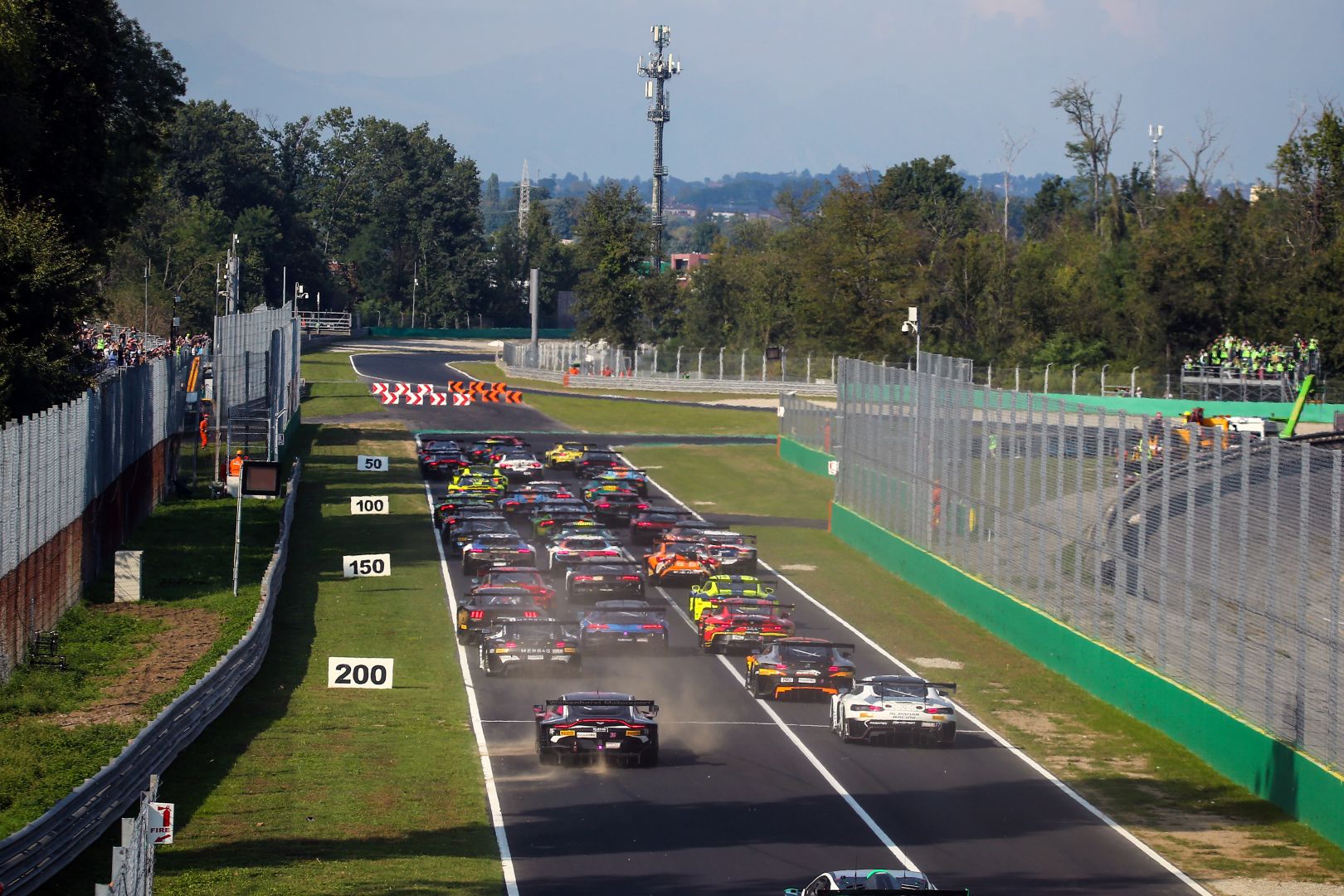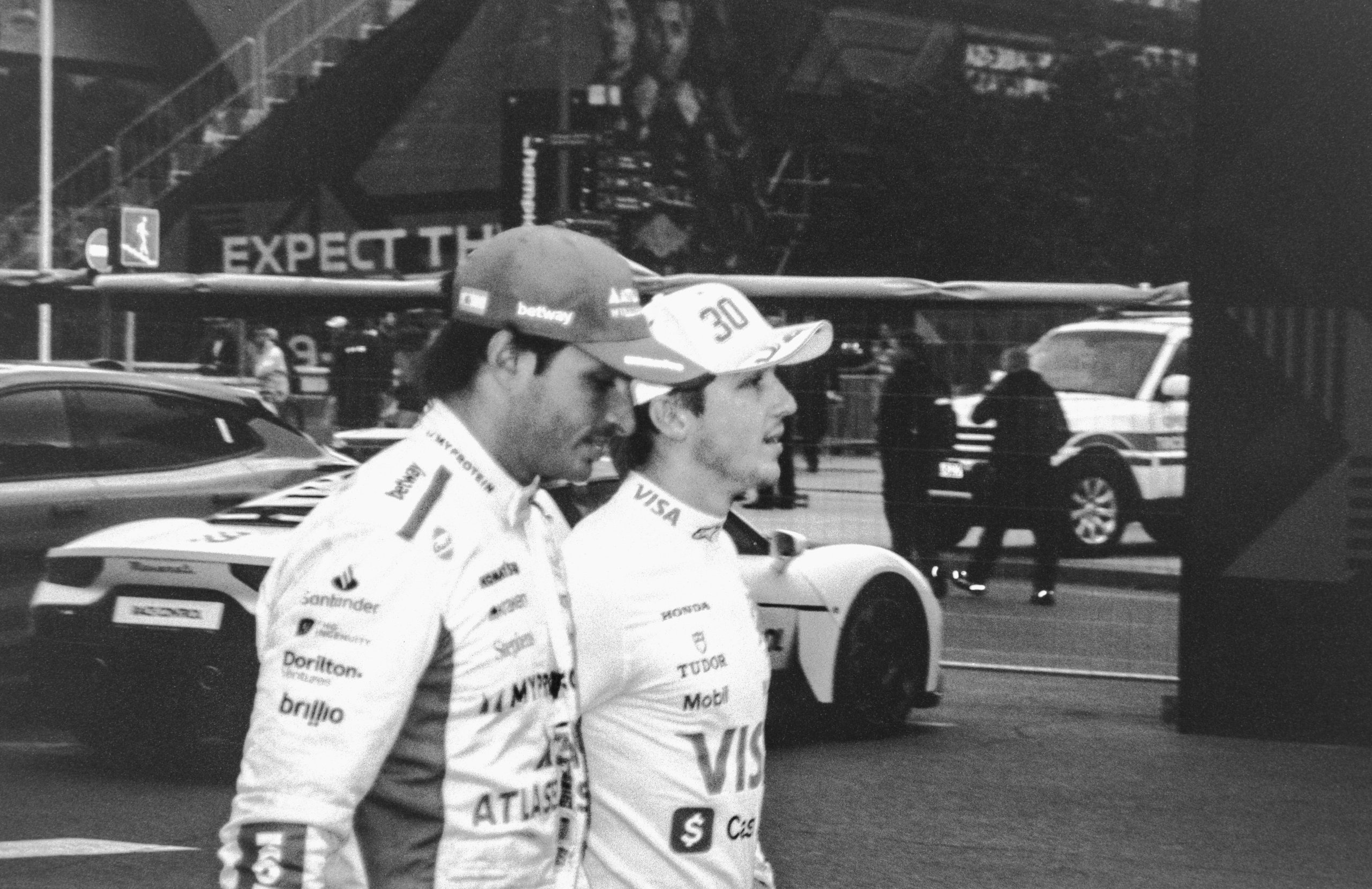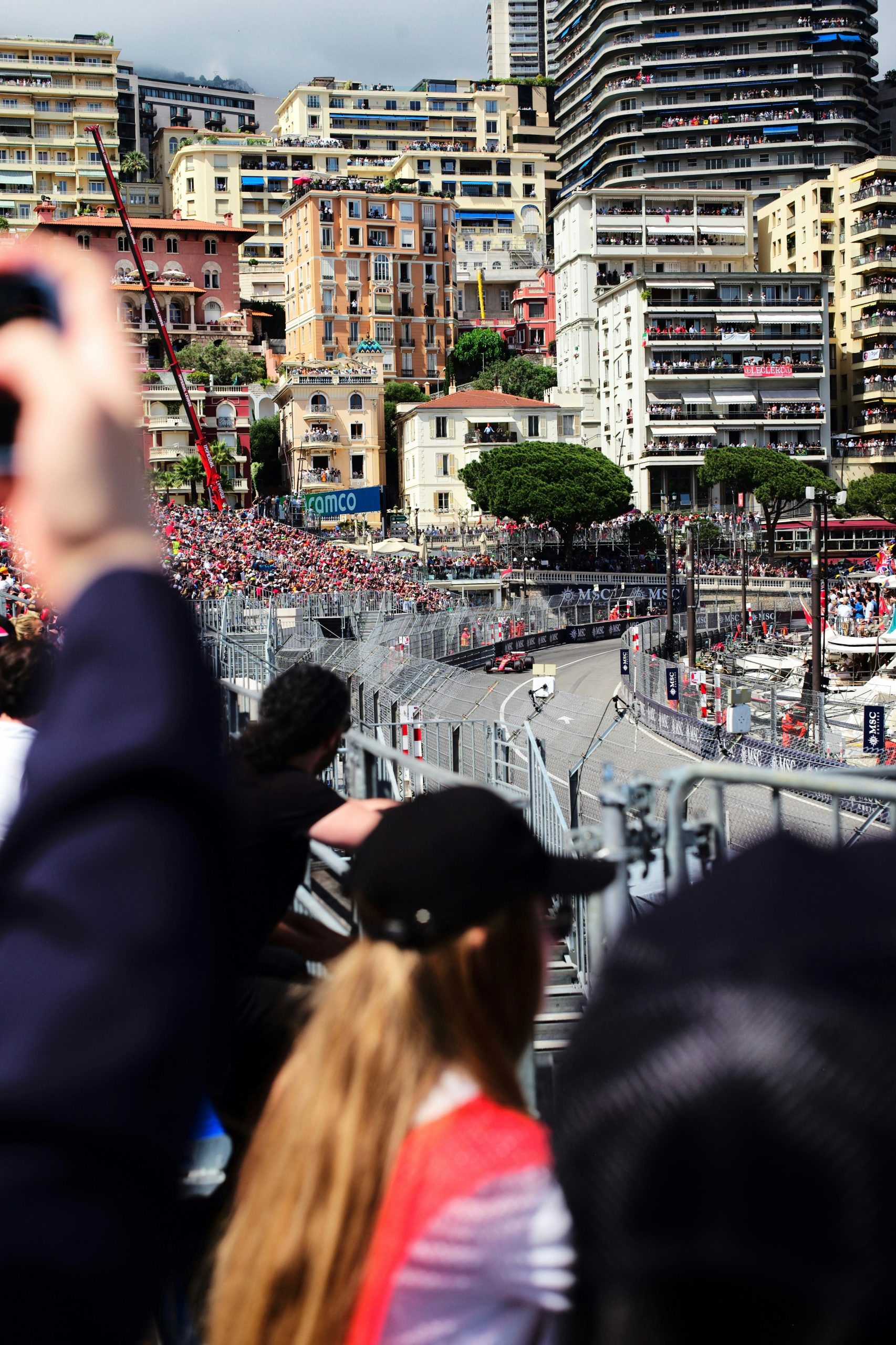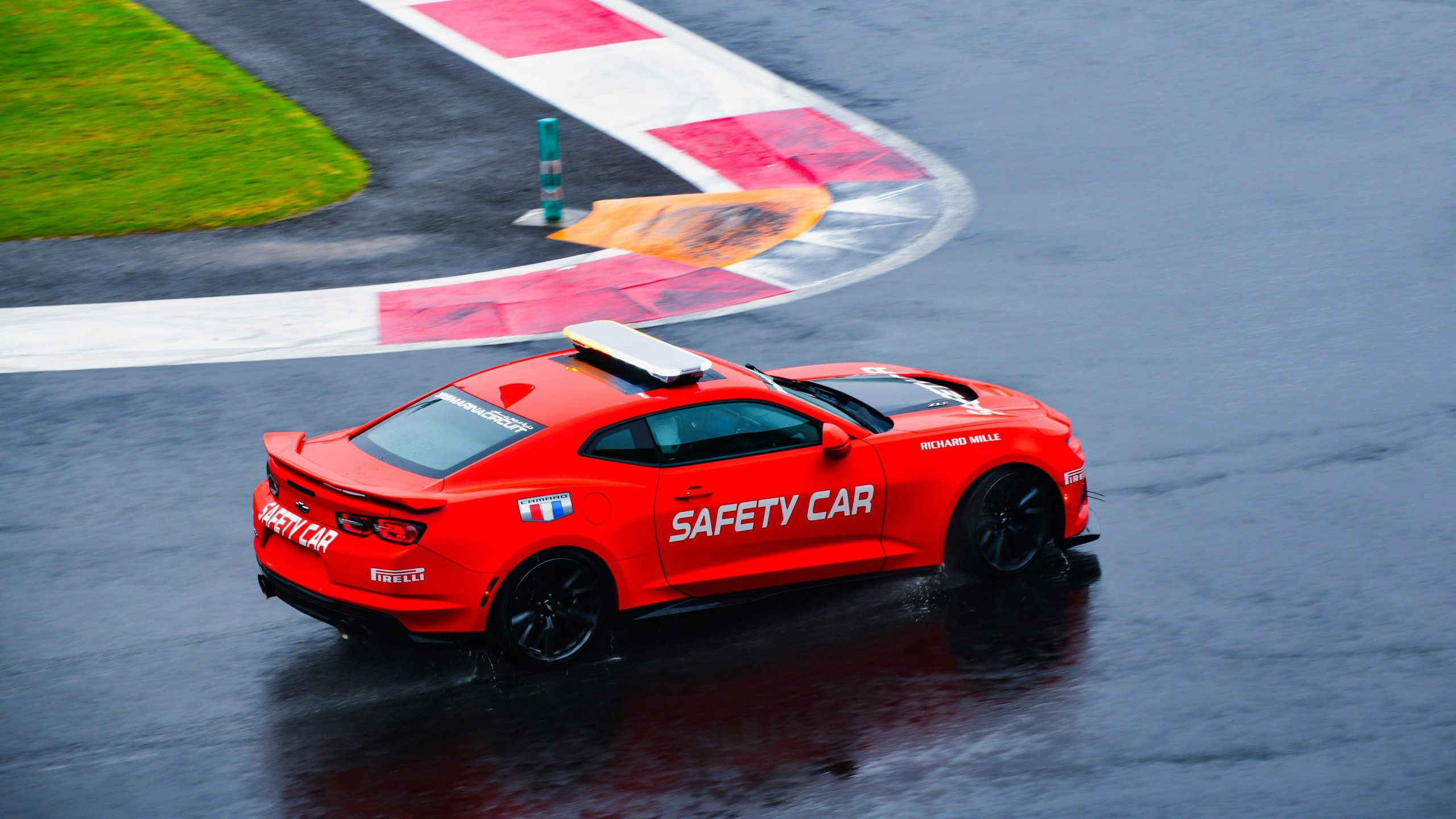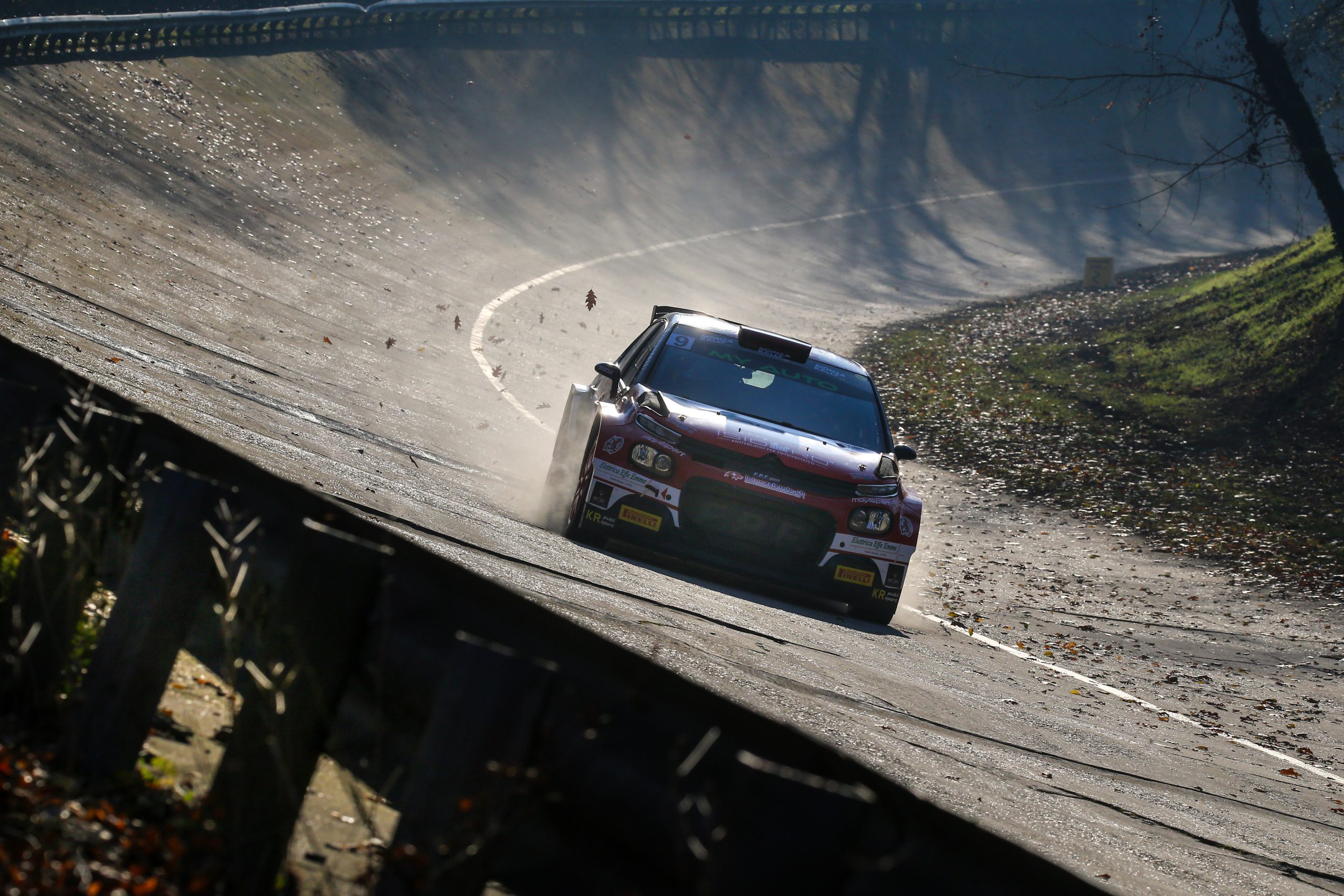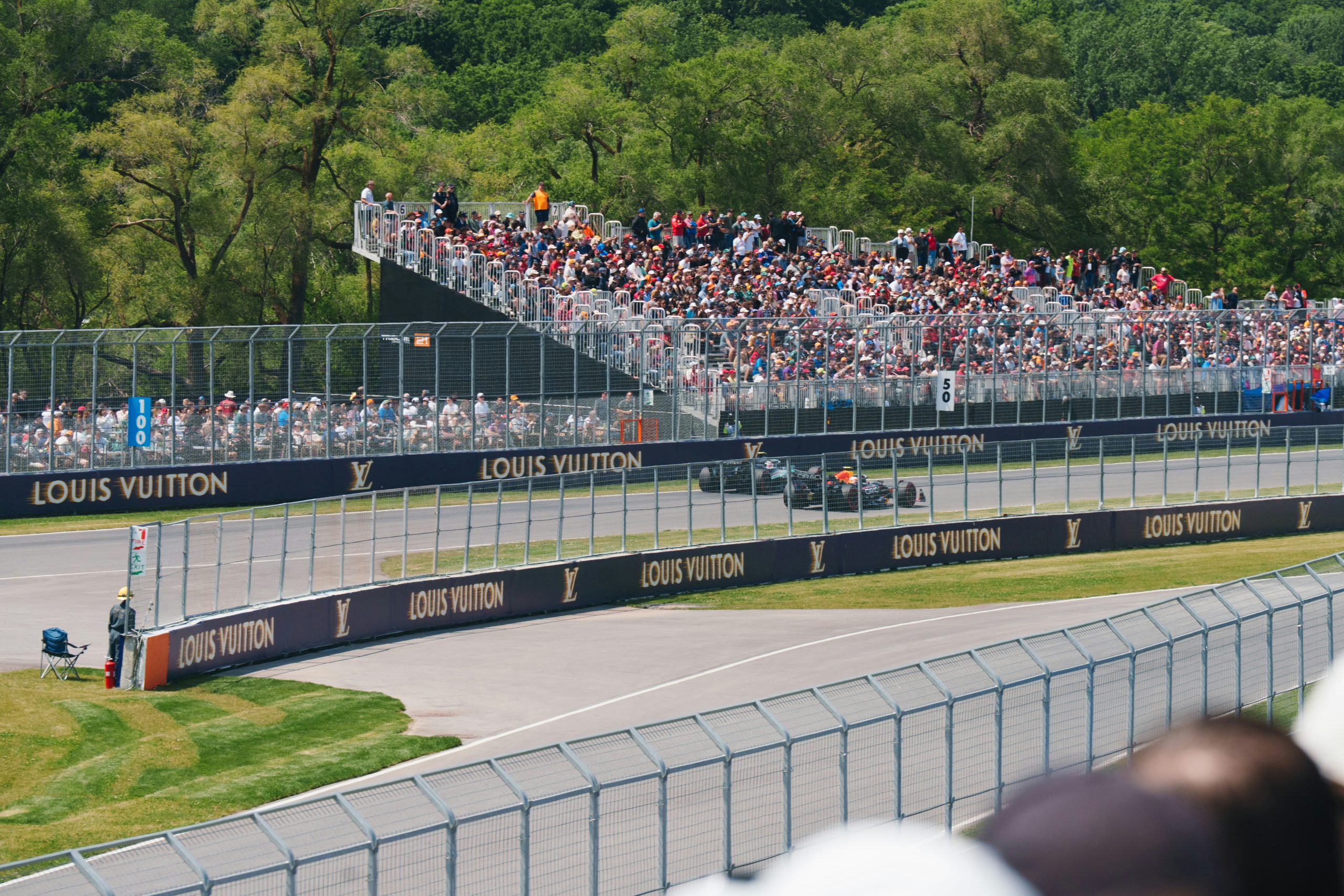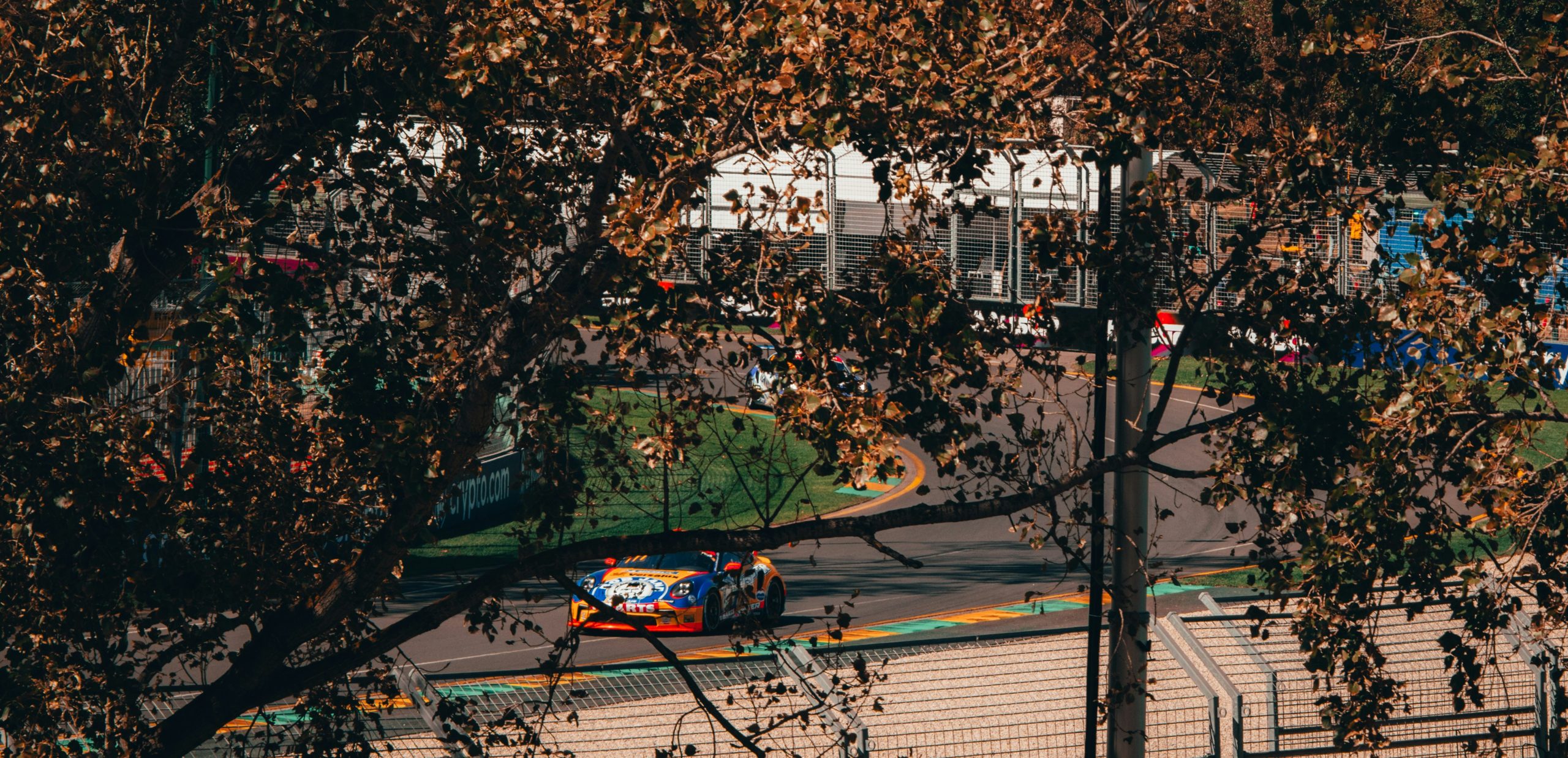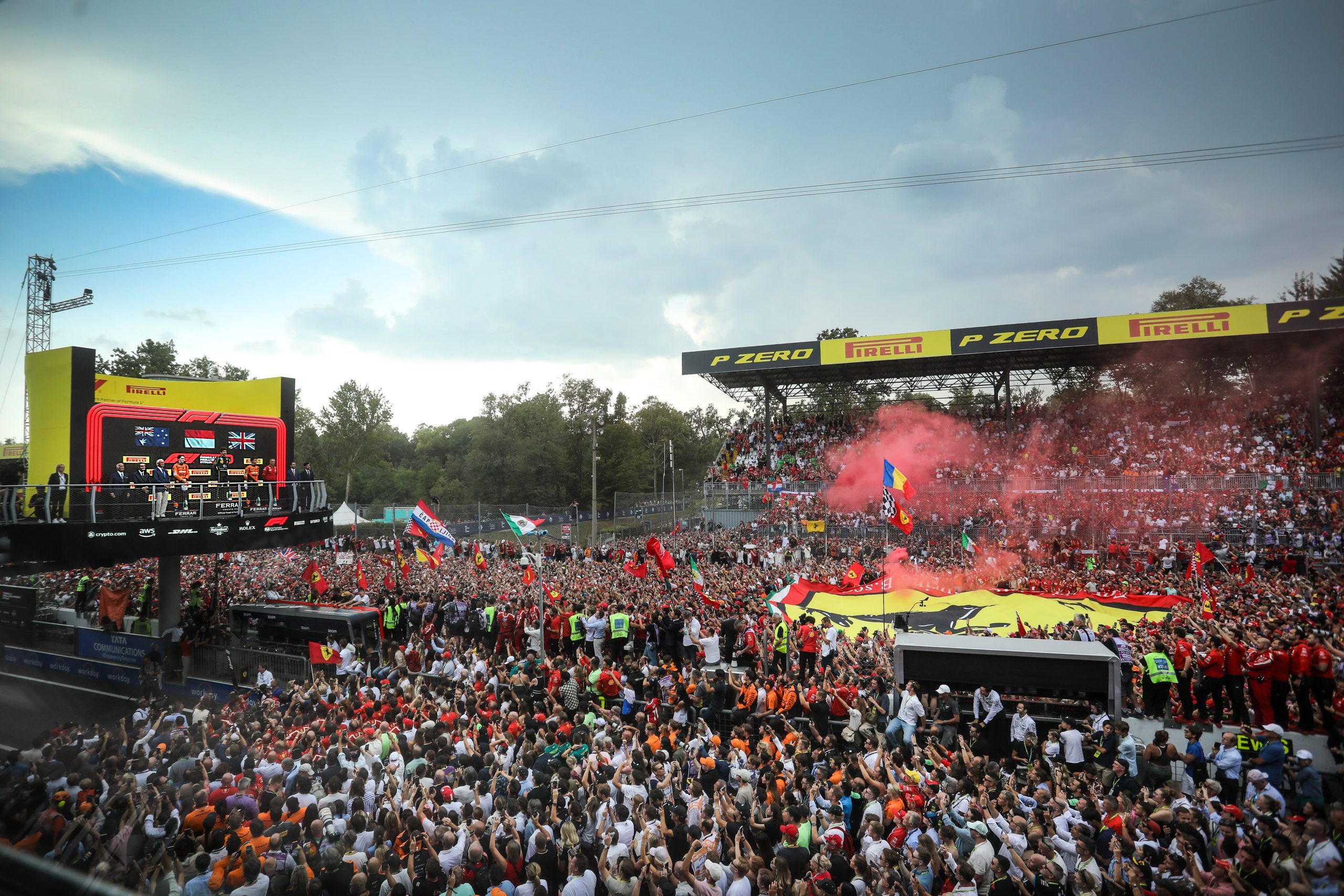What makes a circuit difficult: the factors that challenge drivers and teams
Formula 1 is the pinnacle of speed, precision and strategy. Each circuit is unique, and not all tracks offer the same difficulties. Some are more challenging than others, requiring extraordinary skill on the part of the drivers and impeccable engineering on the part of the teams. But what makes a circuit truly difficult? In this article we will explore the technical and environmental factors that turn a circuit into a real challenge for drivers and teams.
The Technical Curves: the key to Mastery
Curves are one of the main aspects that make a circuit difficult. Tight, fast corners, such as those at Monaco or Singapore, test the drivers' skills and the mechanical grip of the single-seaters. High-speed corners, such as those at Spa-Francorchamps, require impeccable control and higher aerodynamic grip. The driver's ability to choose the right line and manage cornering speed is crucial to avoid mistakes that can cost precious tenths or seconds.
In addition, a circuit with various corner widths or downhill and uphill sections such as Interlagos makes it even more difficult to maintain control of the vehicle, increasing the importance of a perfect driving strategy.
The length and variability of the track
Another determining factor is the length and variability of the track. Longer circuits, such as Spa, test the endurance of drivers, who must maintain high performance for long periods. Different sections of a circuit, such as those at Suzuka or Interlagos, require drivers to be able to adapt quickly to changing conditions, moving from tight corners to fast straights, without ever losing their rhythm.
Circuits that combine different types of sections (fast, technical and low-grip) create more complex challenges, as each sector requires a different car set-up and a different strategic approach.
The environmental conditions: the climate and the track surface
Environmental conditions heavily influence the difficulty of a circuit. Temperature, humidity and unpredictable weather conditions-such as rain or wind-can further complicate driving. For example, Monaco, with its city track and narrow barriers, becomes even more complicated when weather conditions suddenly change.
In addition, some circuits are known for their uneven surface that can reduce grip. High temperatures or rain make tire management even more difficult, and a driver must be able to adapt quickly to changing conditions during the race.
The Set-Up and Preparation of the Machine
Each circuit requires a different car setup. A circuit like Monza, famous for its long straights, requires a car with low downforce to maximize straight-line speed, while more technical circuits like Hungaroring require a car with higher downforce to optimize cornering performance. The difficulty lies in the fact that the conditions and characteristics of each circuit require specific adjustments to maximize the car's performance. The preparation of the car is therefore a key aspect that determines the success of the driver and the team.
Competition and strategies in competition
Finally, the difficulty of a circuit depends not only on the track itself, but also on the competition, race strategies, and team commitment. A circuit that favors difficult overtaking, such as Monaco, can test even the best drivers, forcing them to manage tires and race position impeccably.
But the driver's skill alone is not enough: the team's strategy is crucial in determining the final outcome. Pit-stop strategy, proper timing for stops, and traffic management are all factors that, together, can dramatically change the outcome of a race.
In these situations, communication between driver and team becomes essential, as does the team's ability to adapt quickly to every evolution of the race, from weather conditions to tire behavior. The synergy between driver and team is what often makes the difference between a win and a loss.
How to become a driver: the path to professional motorsport
Becoming a Formula 1 driver is the dream of many, but turning it into reality is by no means simple. It requires boundless passion, huge sacrifices and a precise path from early experiences in go-karts to competing on iconic circuits such as Monza.
In this article, we will guide you through the milestones that every driver must go through to get to the top of motorsport.
The starting point: go-karting
The journey to Formula 1 begins with go-karting. Here, drivers learn the basics of driving: steering wheel control, speed management and track reading. It's not just a game of speed-it's the school where they hone the skills that will later define every career. Children who start racing a kart also learn how to handle physical fatigue and understand tire behavior on the track.
Many of today's greatest drivers, such as Lewis Hamilton, Max Verstappen and Charles Leclerc, took their first steps in go-karts, proving that it is the strongest foundation on which to build the future of any champion.
From single-seaters to minor formulas: the quantum leap
Once go-karts have been mastered, the next step is to enter the world of single-seaters. Competitions such as Formula 4 and Formula Regional are perfect stepping stones for young drivers. Here, you face longer races, drive on real circuits, and learn how to handle much more powerful machines than karts. It is the first real proving ground, where drivers begin to compete in earnest and test their skills.
Formula 4, in particular, is a milestone: those who emerge from this championship can really aim for Formula 1. Lando Norris and Max Verstappen are just two of many examples of drivers who, after dominating F4, have quickly moved on to Formula 1, proving that this category is a real stepping stone for promising talent.
The next step: Formula 3 and Formula 2
After gaining experience in junior single-seaters, the driver is ready to take on Formula 3 and then Formula 2. These championships are crucial to further honing one's skills. The cars are higher performance, the racing is more intense, and the competition is fierce. In Formula 2, many drivers begin to really make the leap to Formula 1. F1 teams closely watch the best F2 drivers to decide who deserves a chance in the top category.
It is no longer enough just to be fast; it is also necessary to be strategic, to be able to handle the pressure of racing and to adapt quickly to changing track and car conditions. The path to F1 is now marked, but the road is still long and hard.
A career of passion, determination and resilience
Becoming a Formula 1 driver is a path that requires not only talent, but also a lot of commitment. Years of racing, sacrifice and continuous evolution of one's technique are necessary to compete at the highest level. But those who have the passion, perseverance and the right mindset can get where only a few succeed: in Formula 1.
Every driver who makes it to F1 is the result of a long journey from local experiences to international circuits. It is never easy, but for those who have the courage to face every difficulty, the dream of becoming a driver can indeed become a reality.
Formula 1's legendary curves: the icons that made history
Formula 1 is not only a sport of speed, cars and strategies, but also of curves that have become legendary for their difficulty, charm and impact on racing. Each circuit has its own special corners that challenge drivers and are remembered for the unforgettable events that took place there. In this article, we will explore some of the most iconic turns in Formula 1, which have written the history of the competition, becoming true symbols of this discipline.
Monza's Parabolica: the curve that sets fans on fire
Let's start with one of the most famous corners in the world: the Parabolica at the Monza Autodromo Nazionale. This right-hand corner is feared and respected by drivers from all over the world.
In 2021 it was officially named after Michele Alboreto, Italian driver and symbol of passion and talent. Despite the new name, for many it remains simply "the Parabolica": a term that evokes challenges to the limit, pure speed and over-the-top technique.
Its strategic position, close to the main straight, makes it as decisive in qualifying as in the race. It is here that the final attack is built, making the most of the slipstream and a good acceleration exit to try to overtake at the first chicane.
From a technical point of view, the Parabolica represents a demanding test bed. It needs a perfect balance of aerodynamic grip, traction and boldness. Those who enter too fast risk going wide and losing ground; those who are too cautious leave precious tenths on the stopwatch. It is a corner that rewards courage and precision, lap after lap.
Over the years, this stretch of track has provided unforgettable moments: overtaking on the limit, epic duels and scenes that have entered the history of the Italian Grand Prix. The grandstands surrounding it are among the most beloved by fans because they offer a spectacular close-up view of one of the most intense phases of the race.
So it is not just a section of the track: it is a piece of the heart of the Temple of Speed, a symbol that combines tradition, excitement and competition.
Eau Rouge-Raidillon: the adrenaline rush at Spa
In the heart of the Belgian Ardennes, the Spa-Francorchamps circuit is home to one of the most famous, spectacular and dangerous stretches in Formula 1: Eau Rouge-Raidillon. More than a corner, it is a true test of courage and talent, a stretch where speed merges with risk in a unique way.
The complex begins with a sudden descent to Eau Rouge, where the single-seaters hurtle at full aerodynamic load facing extreme compression. From there it's a breathless transition to the Raidillon, an extremely steep climb with a blind left turn that takes the drivers toward the Kemmel straight. The total elevation gain exceeds 30 meters in a few seconds, and the lateral load reached by the cars tests not only the vehicles but also the nerves of the drivers.
The difficulty lies not only in the speed, but in the fact that the Raidillon's rope point cannot be seen until the last moment. Those who get the trajectory wrong risk losing control or being unprepared for any unforeseen events.
This very stretch has seen some of the most intense and dramatic moments in Formula 1 history. From daring overtaking at the limits of physical laws to accidents that have sealed the fate of motorsport, Eau Rouge-Raidillon continues to be a crucial junction of the Belgian Grand Prix.
For many fans, this sequence is the pure symbol of Spa: unpredictable, fast, spectacular. And every time a single-seater disappears behind the crest of the Raidillon, fans' hearts stop for a moment. Because here, more than anywhere else, Formula 1 shows its boldest face.
The Seine S: the curve that embodies mastery
The Senna S, of the Interlagos circuit, is one of the most famous corners for its historic charm and intensity. Located immediately after the start straight, this sequence of left and right turns immediately tests drivers' acceleration and braking skills. The Senna S has been the scene of some of the most epic battles in F1 history, from the historic rivalries between Ayrton Senna and Alain Prost to the more recent clashes between Sebastian Vettel and Lewis Hamilton.
Its strategic location makes it crucial for a successful start and for setting the pace during the race, while the spectacular overtaking that took place there established it as one of the most exciting and decisive turns ever.
Maggots-Becketts-Chapel: Silverstone's high-speed dance.
Among the most exciting segments of the Formula 1 calendar, the Maggots-Becketts-Chapel complex of the Silverstone circuit is undoubtedly one of the most spectacular. This sequence of fast, flowing corners is an absolute test of the drivers' precision, responsiveness and courage. Tackled at over 280 km/h, this section requires perfect aerodynamic balance and extreme sensitivity in controlling the car: every movement must be synchronized to the millimeter.
The appeal lies in its speed and unpredictability: drivers change direction several times in a matter of seconds, with the cars staying glued to the asphalt thanks to extreme aerodynamic loads. This is where the true potential of a single-seater and the pure talent of the driver are measured, especially in qualifying, when they really push themselves to the limit.
The transition from Maggots to Becketts to the Chapel and Hangar straight is one of the most beloved sequences for drivers and fans alike, a symbol of Silverstone's historic beauty.
This complex is not just about lap time: it is a true high-speed dance, a trait that embodies the philosophy of Formula 1 in its purest essence: speed, technique and spectacle.
Beyond the Runway
The legendary curves of Formula 1, are more than just passing points: they are places where drivers write history, where the differences between a won and lost championship are made, where fans get excited and experience the race. Each corner represents a challenge, a victory, a dream come true. In every Grand Prix, when drivers take these corners, they do so with the knowledge that they are part of a legend: that of Formula 1.
Evolution of circuit safety: how Formula 1 has protected drivers
Formula 1 is not just about speed, adrenaline and spectacle: it is also the story of a constant struggle for driver safety. From the circuits of the past, dangerous and lacking modern barriers, to the tracks of today, equipped with the latest technology, the evolution of safety has transformed the sport, saving lives and allowing champions to race to the limit without excessive risk.
From the pioneering era to the first safety regulations
In the 1950s and 1960s, racing in Formula 1 was an extremely dangerous endeavor. The circuits were often ordinary roads or racetracks with minimal protection: trees, low walls, and rudimentary guardrails were just a few feet from the track. Victories were celebrated, but each race could turn into tragedy. The lack of standards and protective devices meant that drivers had to rely only on their skill and courage.
It was precisely the high number of accidents and fatalities that prompted Formula 1 to change dramatically. The creation of safety barriers, the introduction of homologated helmets and fireproof suits represented the first steps toward greater protection, gradually transforming the way races were organized.
The era of technological innovations
In the 1980s and 1990s, safety became a top priority. The most iconic circuits, such as Monza, Spa and Silverstone, began to be equipped with wider escape routes, concrete new jerseys, stronger guardrails and shock-absorbing zones, dramatically reducing the risk of fatal accidents.
The cars also changed dramatically. The introduction of the carbon monocoque chassis, the Head and Neck Support (HANS) system, and improvements in seatbelt systems made it possible to protect the driver even in the event of impacts at speeds above 300 km/h. Each innovation has a clear goal: to save lives without taking away from the spectacle of the sport.
Regulations and prevention: ongoing work
Today, safety in Formula 1 is not only about circuits and cars, but also about driver preparation. Regulations such as the pit lane speed limit, management of accident detectors and emergency evacuation procedures are standard in all Grand Prix.
In addition, simulation sessions and virtual crash tests make it possible to anticipate danger scenarios, preventing accidents even before they can happen. Collaboration between the FIA, engineers and sports physicians is constant, with the goal of minimizing any risk, keeping Formula 1 at the forefront of the world in terms of safety as well.
CANCELLED THE MONZA RALLY SHOW 2025
Autodromo Nazionale Monza informs that the 2025 edition of the Monza Rally Show, scheduled for 5-7 December 2025, will not take place.
The decision follows a thorough assessment of the current market dynamics and of the organisational and logistical framework which do not allow the guarantee of a show that can match the tradition and prestige. This also takes into account the planning needs and preparatory activities connected with the infrastructure works scheduled for 2026.
Autodromo Nazionale Monza wishes to apologise to all drivers, teams, commercial partners and fans who had already confirmed their participation or purchased tickets for the event
Information regarding refunds for spectators who bought their tickets on TicketOne.it, via Call Center, at TicketOne retail outlets or at the Monza Circuit Shop will be announced in the coming days.
Go-Karts: the first step towards Formula 1
The world of go-karts is often considered the gateway into motorsports, a playground where the passion for speed and competition starts at an early age. From amateur circuits to professional karting, karting is not only fun, but also a real school for future Formula 1 drivers. Let's discover together the fundamentals, trivia and how the sport has shaped some of the legends of racing.
What is a Go-Kart and how it works
The go-kart is a lightweight, four-wheeled vehicle with an engine that can be gasoline or electric. Its structural simplicity allows drivers to focus on technique: acceleration, braking, cornering and line management. Although it may seem like a game, karting requires precision and quick reflexes, skills that every Formula 1 driver has honed in his or her early career.
Why karting is the school of Champions
Many Formula 1 champions, from Lewis Hamilton to Sebastian Vettel, began their careers in karts. Karting experience teaches drivers to understand how a vehicle behaves in corners, how to read the track and how to manage speed. For this very reason, karting circuits are considered a laboratory for honing the natural talent of young drivers.
The technical fundamentals of karting
To become a complete driver, karting teaches some fundamental skills:
- Cockpit posture: Body position also affects stability and grip. Weight should always be centered.
- Trajectory: Running the most efficient line possible is essential: in karts, even a few inches can make a difference.
- Pedal management: Accelerator and brake should be modulated precisely to avoid wasted time.
- Focus and strategy: Competitive karting requires cool heads and split-second decision-making skills.
Karting and Formula 1: the unbreakable bond
Not only are champions born out of karting, but the discipline maintains a key role throughout their careers. Many professional drivers continue to race or train in karts during off periods to maintain quick reflexes and driving feel. Thus, karting remains an essential ground for understanding the physics of driving and developing the technique needed to take on the world's most powerful single-seaters.
The world of go-karts is not just the first step into motorsport, but a veritable laboratory of skills. Speed, concentration, technique and passion are elements shared by both amateur drivers and Formula 1 stars. From first turns among friends to international competitions, karting is the gateway to a universe where speed is art, strategy and adrenaline.
Legendary Drivers Who Dominated Monza.
The Autodromo Nazionale Monza, known as the "Temple of Speed," is much more than a racetrack: it is a place where the history of Formula 1 mixes with the pure excitement of the fans. Since 1922, the Italian Grand Prix has seen some of the greatest drivers in history race there, protagonists of memorable victories that still resonate among the centuries-old trees of Monza Park.
Monza: a circuit that makes a difference
Monza is unforgiving: long straights, fast corners and braking on the limit test the talent and courage of the drivers. But it is precisely this mix of speed and strategy that makes the circuit so special. It's not enough to race fast here: you have to read every corner, anticipate every maneuver and feel the heat of the fans exploding in the grandstands. Every victory at Monza is not just a sporting achievement, it is an emotional triumph, a moment that remains etched in the fans' memories.
Michael Schumacher: perfection at Monza
Among the drivers who have made their mark at Monza, Michael Schumacher holds a place of honor. Between 2000 and 2006, the "Kaiser" won five times on the Italian circuit, often with races dominated from start to finish. One of the most famous remains that of 2004: a clear-cut victory, made even more memorable by the Ferrari fans, who invaded the grandstands in red, chanting and applauding nonstop. Schumacher himself recounted that the fans' warmth made him feel as if every corner was lighter, every straight more powerful.
Alain Prost: the strategic victories
Not all victories were the result of pure speed. Alain Prost, "the Professor" of Formula 1, proved that at Monza strategy can also make a difference. His victories in the 1980s and 1990s are famous for the calmness with which he approached corners and overtaking, turning his intelligence into valuable championship points. Prost proved that Monza rewards not only engine power, but also lucidity and the ability to read every moment of the race.
Charles Leclerc: the triumph of the fans
Most recently, Charles Leclerc gave Ferrari fans one of the most exciting victories in recent history in the 2019 Italian Grand Prix. After difficult years for the Scuderia, the young Monegasque driver crossed the finish line amid the cheers of tens of thousands of red fans, bringing hope and pride to all of Maranello. Fan accounts speak of tears, flags in the wind and choruses echoing through the trees in the park, transforming Monza into a theater of emotions.
Monza and the fans: the secret of victories
A victory at Monza is never just the driver's: it is the team's, the team's and the fans who fill the grandstands. The passion of the Italian crowd is legendary: choruses, flags and cheers become real emotional fuel. Many drivers have confessed that feeling the support of the fans pushes them through the fatigue, pressure and difficulties of the race. At high-speed circuits like Monza, this energy can make the difference between a victory and a second place.
Monza Park: nature and motorsport
Monza Park is a unique corner of nature that coexists with the power and speed of Formula 1, creating a fascinating and rare contrast in the international scene. Every year, during the Italian Grand Prix, the sound of Formula 1 engines resounds through the centuries-old trees. This fusion of sport and nature has a beauty that fascinates everyone, from fans to ecology enthusiasts.
But how do these two seemingly opposite worlds coexist?
Monza Park: a green oasis in the heart of motorsport
With its 688 hectares of greenery, Monza Park is one of the most vital green lungs in Lombardy. Founded in 1805 at the behest of Napoleon Bonaparte, this park is not only a place of natural beauty, but a true habitat rich in biodiversity, home to ponds, paths and a wide range of flora and fauna. Every corner of the park invites peace, a walk or a jog surrounded by greenery, away from the hustle and bustle of the city.
Yet, once a year, everything changes. During the Italian Grand Prix, the tranquility of the park is transformed into a vibrant celebration of speed and adrenaline. Formula 1 single-seaters, with their unstoppable power, race through the centuries-old foliage of the trees, creating a spectacle that combines the excitement of motorsport with the magic of nature. The contrast between green and speed becomes part of the unique experience that only Monza can offer.
The Integration of nature and motorsport: a model to follow
Autodromo Nazionale Monza is not only a place where speed is celebrated, but a shining example of how nature and technology can coexist in harmony. The track winds through the park without compromising the surrounding ecosystem. On the contrary, its design has always respected the environment, with a continuous focus on sustainability.
The organizers of the Grand Prix and the city of Monza are committed to concrete ecological initiatives: the recycling of materials, the use of renewable energy and the containment of CO2 emissions are just some of the measures taken to minimize environmental impact. Monza shows that even a sporting event of international scope can be organized with the utmost respect for the nature that surrounds it, setting an example to follow in the world of motorsport.
The visual contrast: an incredible landscape
One of the features that makes Monza Park and its racetrack so fascinating is the visual contrast between the lush greenery and the sharp, aggressive lines of the Formula 1 single-seaters. The cars whizzing around the track stand out among the tree foliage and grass fields, creating a backdrop that seems almost unreal. The image of a Ferrari accelerating at full speed under the shade of centuries-old trees is something spectacular that cannot be found at any other circuit in the world.
This coexistence of two such different worlds is also a reminder of how we can balance development and environmental protection. The racetrack, a symbol of speed and technology, is located right in the heart of one of Europe's most important parks, suggesting that even in places where speed takes center stage, we can and should respect the nature around us.
The Grand Prix experience: a unique thrill between nature and motorsport
The Monza Grand Prix is not just a race, it is an immersive experience that engages all the senses. Fans attending the event do not just watch a competition, they experience a perfect fusion between the frenzy of motorsport and the serenity of nature. Many spectators choose to enjoy the race from the lawn or the grandstands, surrounded by greenery, where the beauty of the landscape amplifies the excitement of the moment.
One particular corner of the circuit, the one that runs close to the woods and green areas, offers an extraordinary visual spectacle. As the drivers take on the most challenging corners such as the Parabolica, the sound of the engines wafts through the trees, creating an atmosphere that makes every lap of the Grand Prix a unique experience. The proximity of nature to the circuit only adds to the adrenaline rush of the race, giving fans a feeling of total immersion in a world where speed and tranquility are spectacularly intertwined.
Tifoseria Ferrari and the Temple of Speed.
The Ferrari fan base is one of the most passionate in the world, and Monza is the stage where red fans gather each year to support their beloved Scuderia.
The "Temple of Speed" is not just a circuit, but a true icon, and the atmosphere during the Italian Grand Prix is unique. The adrenaline of the race mixes with the enthusiasm of a public that creates an unbreakable bond with the circuit and the Ferrari drivers.
But how crucial is fan support for Ferrari's victories at Monza?
The historical link between Monza and Ferrari
Since 1922, with very few exceptions, the Autodromo Nazionale Monza has hosted the Italian Grand Prix, a true symbol of history and tradition for motorsport. For Ferrari, Monza is not just a track, but the beating heart of its identity. Every corner, every straight tells stories of challenges and victories.
But what really sets Monza apart is the crowd: the Ferrari fans-often referred to precisely by the term "Tifosi"-are legendary for their overwhelming passion, which is felt in every corner of the circuit. The red grandstands, waving flags and choruses filling the air create an electric atmosphere that makes every race special. The fans are not mere spectators-they are an integral part of every Ferrari victory.
The magic of the Monza cheer: a unique atmosphere
It is not only the intensity of the fans that makes Monza special, but also the atmosphere around the race. The passion for Ferrari is tangible and enveloping. Monza is the meeting point for fans from all over the world to come together in one big party to celebrate motorsport. Fans are not passive spectators; they are an integral part of the race experience, and their support is real fuel for the drivers.
Many Ferrari drivers have always said that racing at Monza means feeling the heartbeat of the team and its fans. The tension and excitement that drivers feel during the Italian Grand Prix is not only related to the performance on the track, but also to the knowledge that they are representing one of the most prestigious racing teams in the world in front of a fan base that supports them without reservation. "When you feel the warmth of the fans, everything becomes possible" said Charles Leclerc after one of his races in Monza.
Fans' support in Scuderia Ferrari's victories at Monza
Ferrari's historic victories at Monza are the result of a special bond between the drivers and their fans. Michael Schumacher won at Monza three times (2000, 2003, 2004), giving the fans moments of pure joy. And, in 2019, Charles Leclerc won a victory that entered everyone's hearts, a sign of hope for Ferrari after a long period of waiting. The support of the "Fans" was essential on both occasions, fueling the drivers' determination to lead Ferrari to success.
Leclerc's victory at Monza in 2019 was particularly emotional for the fans, who saw in that triumph a symbol of rebirth. Ferrari was going through a difficult phase, but on that day, with fans cheering and chanting in the stands, the Monegasque gave them a historic victory that made every Ferrarista's heart flutter. Similarly, the images of the success the Monegasque achieved in 2024 also remained well etched in the hearts of all supporters of the Maranello-based team.
The Monza Grand Prix is not just a race: it is a ritual, a celebration of passion, history and pride for Ferrari. The fans, with their tireless support, are an integral part of the Scuderia's victories at Monza. Ferrari fans are not just spectators, but a living, breathing part of the engine that drives the men from Maranello to always strive for victory. Every year, Monza becomes the beating heart of motorsport, where the passion of the fans and the talent of the drivers meet to write new pages in the history of Formula 1.
GP ITALY 2025: “EVERY DRIVER, A TREE” – THE FOREST OF THE DRIVERS IS BORN
With a simple yet highly symbolic ceremony, the "Bosco dei Piloti" (Forest of the Drivers) was inaugurated in the “Bosco Bello” area, near the Variante Ascari, as part of the “Every Driver, a Tree” project.
The planting of 20 new trees—one for each driver competing in the Formula 1 Pirelli Grand Prix of Italy 2025, taking place on Sunday the 7th—and a “Cypress of Saint Francis” (a clone of the monumental specimen kept in the cloister of the Franciscan monastery in Villa Verucchio, Rimini), was attended by:
-
Stefano Domenicali, CEO of Formula 1
-
Tullio Del Sette, Extraordinary Commissioner of ACI
-
Giovanni Battista Tombolato, Deputy Commissioner of ACI
-
Geronimo La Russa, President-elect of ACI
-
Fabrizio Parrulli, Corps General, Commander of the Forestry, Environmental and Agri-food Units.
This initiative—promoted by the Automobile Club of Italy and the Monza National Circuit, with the support of the Carabinieri Command for Forestry, Environmental and Agri-food Units—is part of “A Tree for the Future”, a major environmental education project by the Carabinieri. So far, more than 50,000 trees have been planted across schools and cities in Italy, as well as in areas hosting key international motorsport events.
Domenicali: "This initiative connects our sport to the future of the planet"
“The creation of the ‘Forest of the Drivers’ at the Monza National Circuit is a concrete symbol of our mission for environmental education, and reflects our shared responsibility to show how motorsport can contribute to a more sustainable future,” emphasized Stefano Domenicali, President and CEO of Formula 1.
“It’s wonderful to see every driver represented by a tree, creating a living legacy that ties our sport to the planet’s future. Formula 1 is on its way to achieving Net Zero by 2030, and we are committed to promoting positive change, both on and off the track. I would like to congratulate the Automobile Club of Italy, the Carabinieri, and all local partners for their dedication to this project.”
Del Sette: “Motorsport must play an active role in Italy’s ecological transition”
“This is not just about increasing the green heritage of our country,” said Extraordinary Commissioner Del Sette.
“It’s about affirming that the world of motorsport can and must be an active player in Italy’s vital ecological transition.”
“This ‘Forest of the Drivers’ is here to remind us all that sport, safety, technology, and the environment can contribute significantly to building a better future—not just within the circuits hosting the world’s most beloved sporting events, but especially outside them.”
Tombolato: “Loving this sport means turning it into an opportunity for environmental action”
“This initiative perfectly represents the attention that motorsport in general, and Italian motorsport—through ACI in particular—gives to the environment,” said ACI Deputy Commissioner Tombolato.
“It’s easy, obvious, and above all wrong to believe the outdated idea that ‘motorsport equals pollution’ and indifference to the natural world. We know that’s not true.
In fact, the truth is the opposite.
And today, here, we testify to that once again.
Loving this sport, as we do, also means being mindful of its environmental impact and turning every race into an opportunity for deeper reflection and concrete, visible action.”
La Russa: “A small gesture for us, but a big message for motorsport fans”
“A small gesture for us gathered here today, but a powerful message for motorsport and Formula 1 fans everywhere and of all ages,” said ACI President-elect La Russa.
“We hope these trees—whose roots symbolize the support and inspiration of our past, whose trunks give shape and strength to the present, and whose branches hold our hope for the future—will become the most vivid and vital symbol of the mission to which we’ve chosen to dedicate our best energies: giving the Monza National Circuit a future truly worthy of its extraordinary and unforgettable past.”
Parrulli: “Leveraging the appeal of sport to awaken consciences and raise greater awareness about protecting the planet”
“‘Every Driver, a Tree’ aims to offset the emissions from all major races held each year under the auspices of the ACI Federation,” said Parrulli.
“This project is intended to be a driving force for reforestation that promotes the biodiversity of the territory—not only from a botanical perspective but also a faunal one. The benefits even extend to insects, especially pollinators, which are essential to human survival.
Our commitment is not only environmental but also cultural, and this initiative was born as an environmental education project—using the appeal of sport to awaken people’s awareness and stimulate a deeper understanding of the role each of us plays in safeguarding the planet.”---------------------------------------
Pilotto: "Ensuring a balance between sporting and technological development and the preservation and enhancement of the park's green and tree-rich heritage"
"The environmental value of the Park is unique, and Monza offers it every year to its many motorsport enthusiasts," said Pilotto. "This initiative confirms the shared commitment and sensitivity between the Villa Reale e Parco Consortium and the Autodromo Nazionale to ensuring a balance between sporting and technological development and the preservation and enhancement of the park's and city's green and tree-rich heritage. After the severe storms of 2023, even the most affected area of Bosco Bello will be able to recover."
(Press Release – Automobile Club d’Italia)



